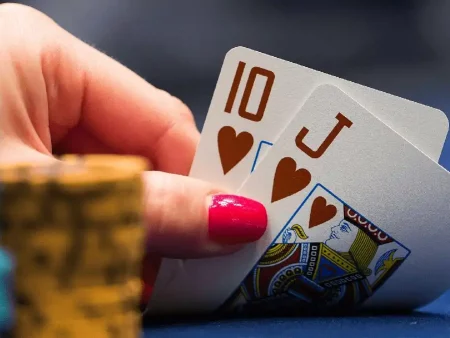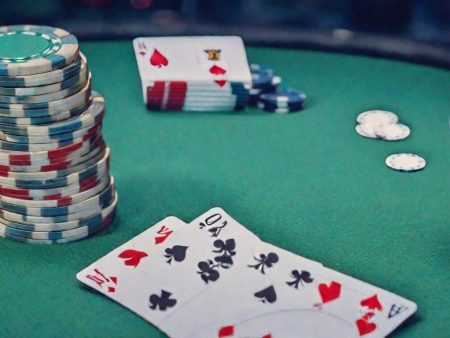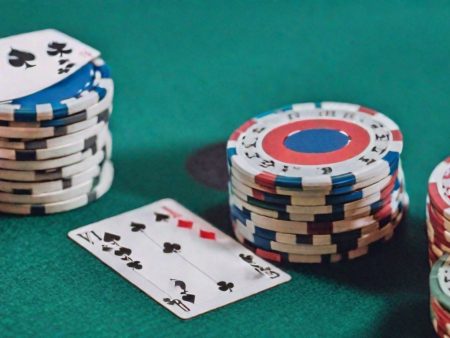In the poker world, the term “nuts” is used to describe the best possible hand a player can have at any given time during a hand. It represents a combination of cards that offers the highest probability of winning the pot. The term comes from the phrase “nuts hand” in English and is commonly used in poker literature, training materials, hand reviews, and articles, all contributing to the understanding of poker terminology. When analyzing online casinos, it is also crucial to pay attention to industry-specific terms to truly grasp the nuances of the game.
Examples of Nuts Hands
Nuts can refer to a variety of hands, from a set to a straight flush. However, a pair does not fall into this category, as the board structure usually provides an opportunity for an opponent to make a stronger hand. It’s important to note that the term “nuts” isn’t used when talking about a flush draw, since there is no hand stronger than a flush draw itself. Also, you should consider signup bonuses to maximize your advantages.
Read also: What are blockers in poker?
Can a Pair Ever Be a Nut?
It’s important not to get too excited, even if you have high cards. A pair never guarantees a nut in poker. At any stage of the game, your opponents could make two pairs or even a set with their pocket cards.
For instance, if you have a pair of kings, and the community cards are 2, 5, 7, Queen, and Jack, it might seem like you have the nuts at first glance. But this is often a trap for beginners. Your opponent could have combinations like 2+5, 7+Queen, or 5+7, forming two pairs and ultimately winning. If your opponent holds pocket 22, 55, or 77, they have a set and beat you. So, a pair by itself never guarantees the nuts in poker. The same holds true for two pairs, even the highest ones. There’s always a risk that an opponent’s set of pocket cards can beat your two pairs.
Set
A set is a specific poker hand that requires careful analysis of the board to determine its strength. If there are no possible straight or flush combinations on the board, a set becomes a very strong hand. The criteria for evaluating a set on the flop, turn, or river are as follows:
- No more than two cards of the same suit.
- No pairs on the board.
A set can indeed be a nut in poker, but only under certain conditions. You need to carefully analyze the table for any stronger combinations. If you see that a straight or flush cannot possibly be completed, your set becomes the strongest hand. The key factors that determine if a set is a nut are:
- No paired cards on the board (aside from potential full house possibilities).
- No three cards of the same suit on the board, aside from any potential flush combinations.
- No three consecutive cards on the board, which would form a straight.
By eliminating the possibility of stronger hands, you can ensure your set is the winning hand.
An essential poker rule is that a set is considered a nut only if you hold pocket cards of the same value. A set formed from two pairs on the board is not the best scenario, as an opponent could create a similar combination with a higher kicker. While the nuts is a powerful hand with high equity, it doesn’t guarantee a win. Therefore, it’s crucial to remain unpredictable, even with a strong hand, and make wise decisions, such as folding when necessary.
Read also: UTG in poker – peculiarities of position and hand spectrum.
What Does Nuts Mean in Poker?
The term “nuts” refers to the optimal combination of cards at a particular stage of the hand. However, even if you hold the nuts, it doesn’t always guarantee a win at the showdown. For example, a straight that started on the flop might be outdone by two pairs, which can later be improved to a full house. The abbreviation “NH” in the chat room is often used to show admiration for the strong hand played by an opponent.
Sometimes you might hear the term “nutsist,” which refers to a player who adopts a cautious and balanced approach, only playing dominant hands post-flop.
There are two types of nuts in poker: current nuts and absolute nuts.
- Current Nuts: These are the best hands at the current stage of the hand (flop, turn, or river). However, the situation can change if more community cards are revealed.
- Absolute Nuts: These hands remain the strongest until the end of the hand, no matter what happens.
Origin of the Term “Nuts”
The term “nuts” has become a widely accepted part of poker terminology, used by professional players around the world. For many newcomers, the word “nuts” might remind them of the popular chocolate bar, associating it with something strong or unbeatable. Some players even link the term to the Nestlé brand, suggesting that the “nuts” hand is like the perfect chocolate bar — a delicious, unbeatable treat.
Another interesting theory about the origin of the term relates to nuts used as collateral in poker games. In the Wild West, players would sometimes use nuts unscrewed from the wheels of their carriages and wagons as a deposit on the game table, which served as a pledge in case they lost the bet and needed to pay up.
The Subtleties of Playing the Nuts
While playing a hand considered to be a “nut” might seem straightforward, it’s essential to understand that the goal is to maximize your winnings. After receiving a strong combination, you need to consider the board texture and your opponent’s playstyle to play optimally. As mentioned, the nuts of one street can change when the next cards are revealed. If you believe your opponent might improve their hand with the next card, you should make it costly for them to see the remaining cards.
When you’re confident that you have the strongest hand and no additional cards could defeat you, tactically approaching your opponent’s game becomes key. Against an aggressive opponent, it might be helpful to show a weakness, enticing them to invest heavily in the pot with a wider range of hands. For a tight player, you’ll need to choose bet sizes that will appeal to their more conservative playing style.
Example Scenario
Let’s imagine Player A has two sixes (6 6), and Player B has a pair of kings (K K). The turn reveals K 6 8 8, and both players have a full house. However, only Player B, with the pair of kings, has the nuts in this situation. Player A can only hope for another six on the river to make four-of-a-kind, but even then, Player B’s kings will still be the stronger hand. If you have the nuts on the river, though, it’s an absolute victory. Looking for proven strategies and tactics? Don’t miss the blog on gambling rules – useful guides and expert advice.
FAQ: What are nuts in poker?
What does the term “nuts” mean in poker?
In poker, the "nuts" refers to the best possible hand you can have at any given point during the game. This hand guarantees a win unless the community cards change the situation. It's a term used by players to describe unbeatable hands in specific contexts.
Can a pair ever be the nuts in poker?
A pair cannot generally be the nuts, because a pair can often be beaten by a higher combination. The board may allow your opponent to form a stronger hand, such as two pairs or a set, which could defeat your pair.
What is an example of a “nut” hand in poker?
An example of a nut hand could be a royal flush, which is the strongest hand possible in poker. However, what constitutes the nuts can vary depending on the community cards on the table.
What does “absolute nuts” mean in poker?
The absolute nuts refers to a hand that will remain the best hand regardless of any remaining community cards. It's a hand that cannot be beaten, even if further cards are revealed.
How does the “nuts” change during the game?
The nuts can change as the community cards are revealed. For example, a hand that is the nuts on the flop might no longer be the nuts after the turn or river cards are dealt, depending on how the board evolves.
Can a “set” be the nuts in poker?
Yes, a set can be the nuts, especially if no higher combinations like a straight or flush are possible on the board. However, you need to evaluate the table carefully to ensure your set remains the strongest hand.
Why is the term “nuts” used in poker?
The term "nuts" has various theories behind its origin. One theory relates to the idea of a perfect, unbeatable hand, similar to how a "nut" might symbolize something strong and desirable. Another theory connects it to the practice of using nuts as collateral in early poker games.






